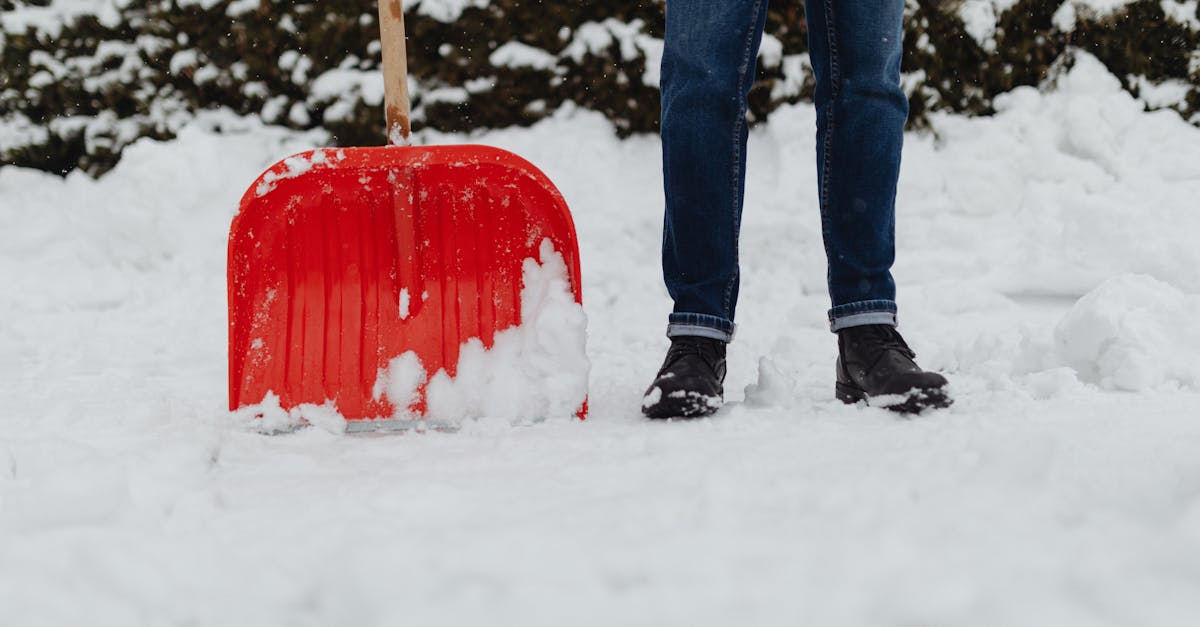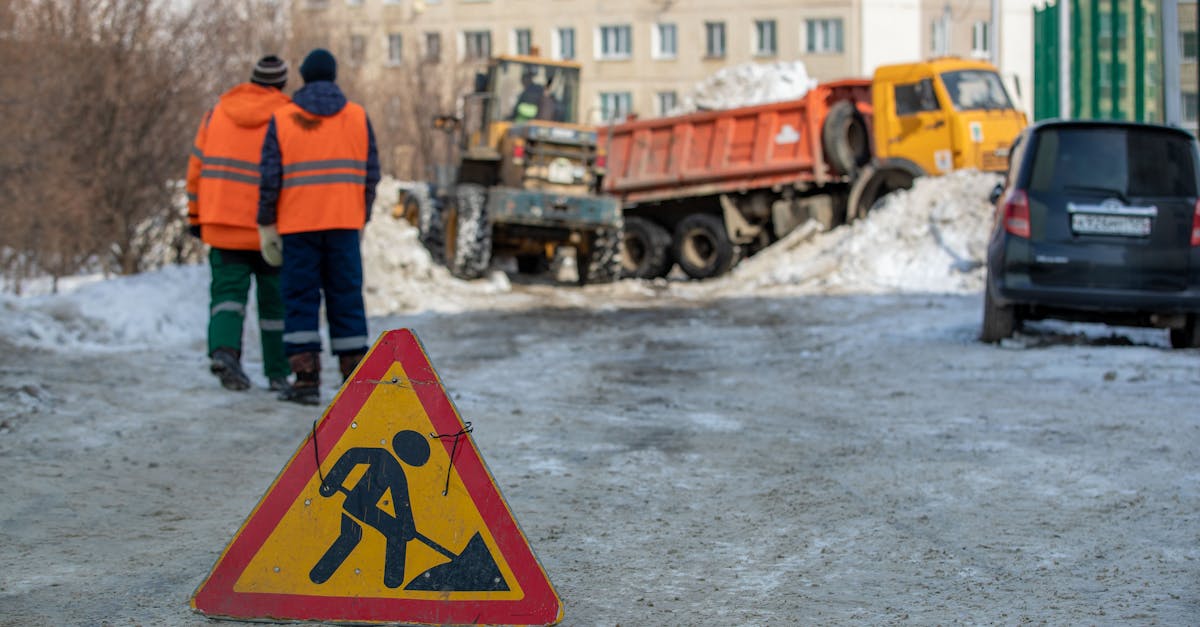
Table Of Contents
Regular Maintenance Practices
Regular maintenance practices play a critical role in preventing snow from sticking to your driveway. It is essential to regularly clear any debris, such as leaves or dirt, that may trap moisture and contribute to ice formation. Keeping the surface clean allows for better drainage and reduces the likelihood of snow melting and refreezing. Performing these tasks consistently will ensure that the driveway is less prone to snow accumulation over time.
Snow removal from driveways should also be tackled promptly after snowfall. Shoveling as early as possible minimizes the chance for snow to compact and freeze onto the surface. Consider using appropriate tools for the task, such as a wide snow shovel or a snow blower, to make the job easier. Developing a routine snow removal strategy can greatly enhance the overall effectiveness of your maintenance efforts.
Snow Removal Tools and Their Usage
Having the right tools for snow removal from driveways can make a significant difference in efficiency and effectiveness. Using a quality snow shovel designed for your specific needs can help you manage light to moderate snowfall. Opt for shovels with ergonomic handles to reduce strain on your back during repeated use. In addition, snow pushers can be beneficial when dealing with larger accumulations. They allow for quick removal by sliding the snow to the side rather than lifting it, which can save you time and effort.
For heavier snow or ice buildup, a snow blower is an excellent investment. These machines can clear large areas quickly while minimizing physical exertion. Choose a model suitable for your driveway size; electric options are quieter and more environmentally friendly, while gas-powered versions offer more power for thicker snow. Regardless of the tools you choose, regular maintenance is critical to ensure they remain effective throughout the winter season.
Temperature Control Techniques
Maintaining optimal temperatures near the driveway can help in reducing snow buildup and making snow removal from driveways more manageable. Proper insulation of the surrounding areas can create a warmer microclimate. This may involve using materials that prevent cold air from settling around the driveway, which also helps diminish frost formation.
In addition to insulation, homeowners can explore other temperature control techniques to lessen snow accumulation. For example, incorporating thermal mass can be beneficial. A surface that retains heat during the day can effectively melt away freshly fallen snow, easing the snow removal from driveways and minimizing the labor involved in clearing a path.
Utilizing Heated Driveways
Heated driveways offer an innovative solution for homeowners looking to simplify snow removal from driveways. These systems work by circulating warm air or heated water beneath the driveway surface. This prevents snow and ice from adhering, making it easier to keep the surface clear during winter storms. When temperatures drop, the heated elements activate automatically or can be controlled via a thermostat or timer, ensuring a consistent defense against winter accumulation.
Installing a heated driveway can be a significant investment, but many find the convenience to be worth it. Not only does it minimize physical labor, but it also reduces the need for harsh chemicals or abrasives, which can damage asphalt or concrete over time. For areas with heavy snowfall, the long-term benefits include lower maintenance costs and improved safety, as the risk of slips and falls decreases significantly.
Salt Alternatives for Snow Prevention
Using salt for snow removal from driveways is a common practice, but there are effective alternatives that can be just as beneficial. Calcium chloride is a popular choice as it works well in low temperatures, helping to melt ice without causing significant harm to concrete. Sand can also be useful; it provides traction on icy surfaces while allowing for easier removal of snow. Both options reduce the environmental impact associated with traditional rock salt, making them a safer choice for landscaping and local water systems.
Another eco-friendly solution involves using beet juice or pickle brine as a de-icer. These materials lower the freezing point of water, making it easier to tackle snow accumulation. They are not only less damaging to surfaces but also have less corrosive effects than traditional salt, making them ideal for snow removal from driveways. Exploring these alternatives helps homeowners maintain their driveways effectively while being mindful of environmental concerns.
EcoFriendly Solutions for Driveway Care
Using eco-friendly solutions for snow removal from driveways can significantly reduce environmental impact while maintaining safety during winter months. One effective method involves using sand or kitty litter, which provides traction without harmful chemicals. These materials can be spread on the surface before a snowstorm hits, minimizing slick conditions and the need for additional snow removal efforts.
Another option is to apply a mixture of beet juice and salt brine. This natural blend reduces the amount of traditional road salt needed and creates a more effective melting agent at lower temperatures. The sugar content in beet juice enhances the melting efficiency, making it an excellent choice for preventing ice buildup while being gentler on driveways and surrounding vegetation.
FAQS
What are effective regular maintenance practices for my driveway to prevent snow from sticking?
Regularly clearing your driveway of debris and ensuring proper drainage can help prevent snow from sticking. Consider sealing your driveway to create a smoother surface that snow is less likely to adhere to.
Which snow removal tools are best for keeping my driveway clear?
Effective tools for snow removal include snow shovels, snow blowers, and ice scrapers. Each tool has its strengths, with snow blowers being ideal for larger areas and shovels being useful for smaller, more intricate spaces.
How does temperature control help in preventing snow from sticking?
Maintaining a consistent temperature on your driveway can reduce the likelihood of snow sticking. Techniques such as using heated driveways or applying liquid de-icers can help keep the surface warm enough to prevent snow accumulation.
What are heated driveways, and how do they work?
Heated driveways are systems that use electric or hydronic heating to warm the surface of the driveway. This prevents snow and ice from bonding with the surface, making it easier to keep the area clear.
Are there eco-friendly alternatives to traditional salt for preventing snow on my driveway?
Yes, there are several eco-friendly alternatives to traditional salt, including sand, cat litter, or specially formulated de-icers made from natural ingredients. These options are less harmful to plants and pets while still effective in preventing snow accumulation.
